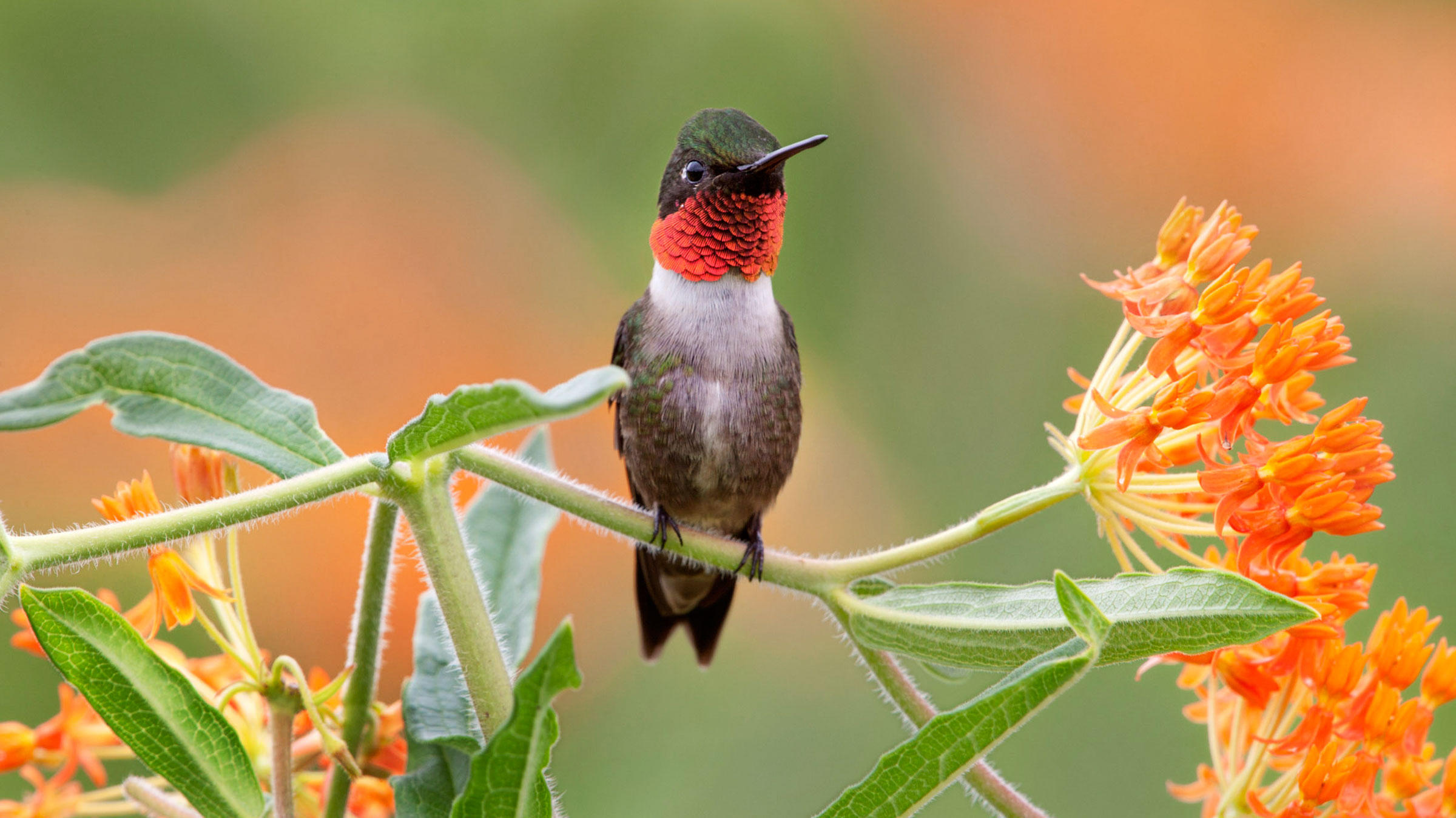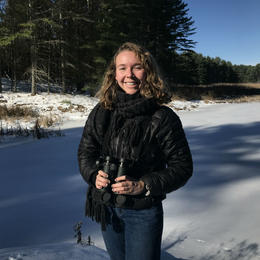Craft lovers this one is for you! Today we are going to design a 3-D Plants for Birds garden. We'll learn about some important (and beautiful) plants that provide great habitat and food for birds. I'll also cover how these gardens are not only key to the success of birds, but bees and other pollinators as well.
Materials:
- Construction paper
- Cut outs of plants, bees and birds (see PDF at bottom of lesson)
- OR draw your own to cut out OR print photos from the internet
- Glue/tape
- Coloring utensils
- Cardboard
- Access to a printer (OPTIONAL)
So what is a Plants for Birds garden anyway?
Plants for Birds is National Audubon Society program that promotes planting native plants in and around your yard to provide shelter and food for birds that have been lost due to development and landscape fragmentation. Watch the video below for an animated overview that helps you visualize why this program is important.
Plants for Birds from Audubon.org on Vimeo.
Overview of Plants for Birds from the National Audubon Society
So how do you know what kinds of plants to use?
Use our Native Plants database. This awesome tool will give you a list of important native plants based on your area code and also tells you where you can buy them! It even shows you what birds you will attract for each plant. So if you have a favorite bird look for plants they like! What plants do you see on your list? Do you recognize any of them? Some favorites on my list are:
Black-Eyed Susan
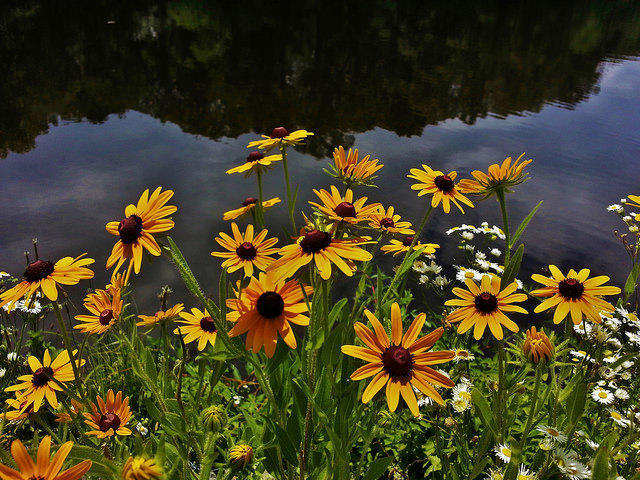
This flower grows 1 to 2 feet tall in full sun and moist to dry, well-drained soil. The daisy-like flowers are yellow with a brownish-purple center, and bloom on rough stalks from June to October. These vibrant yellow flowers are beloved by both birds and insects - their seeds attract birds and its nectar attracts pollinators.
Canadian Goldenrod
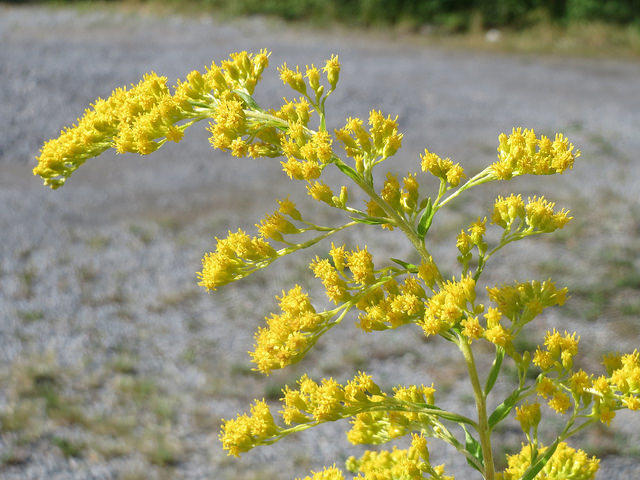
Goldenrod plant can grow up to 5 feet tall! In late summer to fall the stems are capped with masses of tiny yellow flowers. It grows in full sun to partial shade, adapting to a variety of dry to moist soils, including sandy, loam, and clay soils. Song birds and woodpeckers love this plant! This plant can grow aggressively (and invasively) so check in with your local garden experts before planting this one!
Common Milkweed
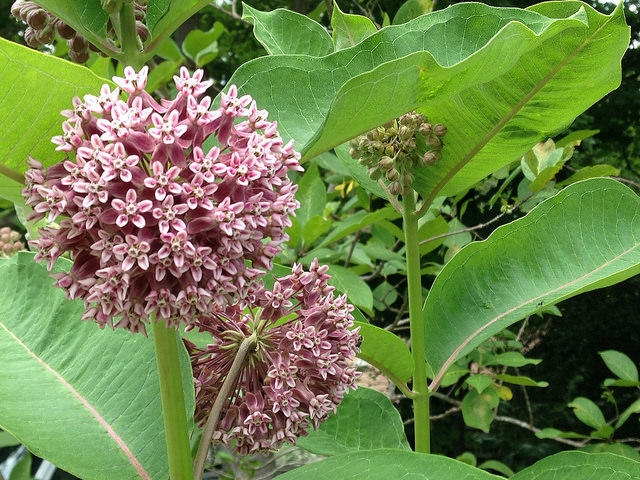
You are probably familiar with this plant if you've learned about the Monarch butterfly. Monarchs depend on this plant for food, a place to lay their eggs and a place for caterpillars to enter their chyrsalis. Common Milkweed typically grows 3 to 4 feet tall on stout, upright stems. The plant’s most noticeable features are its fragrant, pink to purple flowers that bloom from June to August. It is drought tolerant, growing in full sun and in a variety of moist soils, including sandy, rocky, clayey, or well-drained loamy soils. Milkweed is loved by many birds who eat caterpillars and other isnects. Note that the milky sap from this milkweed is poisonous if ingested in large quantities! Discussion question: Why do you think Monarchs eat a poisonous plant?
Choke Cherry
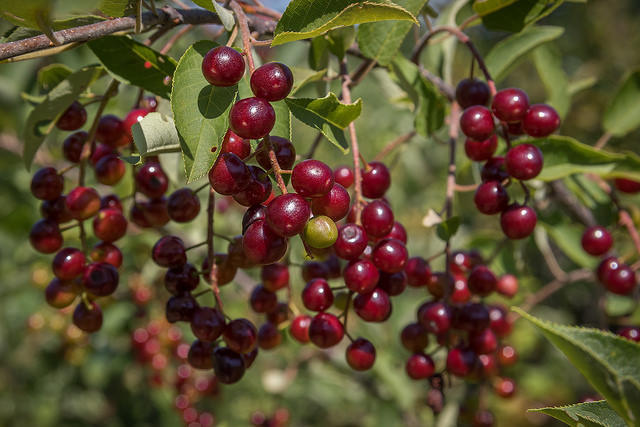
Choke Cherry is a shrub that or small tree grows 20 to 30 feet tall with reddish-brown twigs. The red cherries become black as they ripen from July through August, and provide an important source of food for browsers(deer, rabbits), small mammals, and many species of birds. It grows in dry to moist, well-drained loams, in full sun to partial shade, and is tolerant to drought and dry/shallow-rocky soil. Choke Cherry is also a larval host for many species of butterflies and moths. I have seen many Cedar Waxwings snacking on t hese berries!
A huge reason there is so much overlap between plants that are helpful for birds and pollinators is that birds eat birds eat pollinators and other insects. So if a plant is important for an insect for habitat or food, it is also important for the bird that will eat that insect. For example, oak trees can provide a habitat for over 550 species of caterpillars! Who loves to eat caterpillars? Birds! So oak trees serve as an important food source for birds AND insects including pollinators.
Ok, so now we have an idea of some kinds of plants that provide food and shelter for birds and pollinators. Your next step is to look up at least three native plants in your area using the Native Plant Databse. They can be flowers, shrubs or trees. Think about birds that visit your green space (yard or local park) and what plants they would benefit the most from.
Design your Plants for Birds Garden:
Steps:
1). Gather your materials
2). Cut out your plants and birds
3). Draw or print a picture of where you live including your yard or green space. If you don't have green space where you live, you can draw a picture of a local park.
4). Tape/glue your green construction paper onto a piece of cardboard as big as you would like your garden to be. This is your grass! Then tape/glue your home or park onto the cardboard.
5). Plan where you'd like to place your plants.
Some things to consider: Do you want to be able to see your plant from the window for birdwatching? If you have a garden already maybe you want to plant your native flowers there to attract pollinators. Does your park lack native plants? What birds do you usually see in your greenspace? Think about where the best sun is in your green space.
6). Start "planting"! Take your plant cutouts and tape them to the places you'd like them to be.
7). Show off your beautiful garden! Maybe use this diagram to help guide you where to actually plant some of these native plants.
Want to check out some local Plants for Birds gardens? Visit our Plants for Birds: Burlington Projects page.

